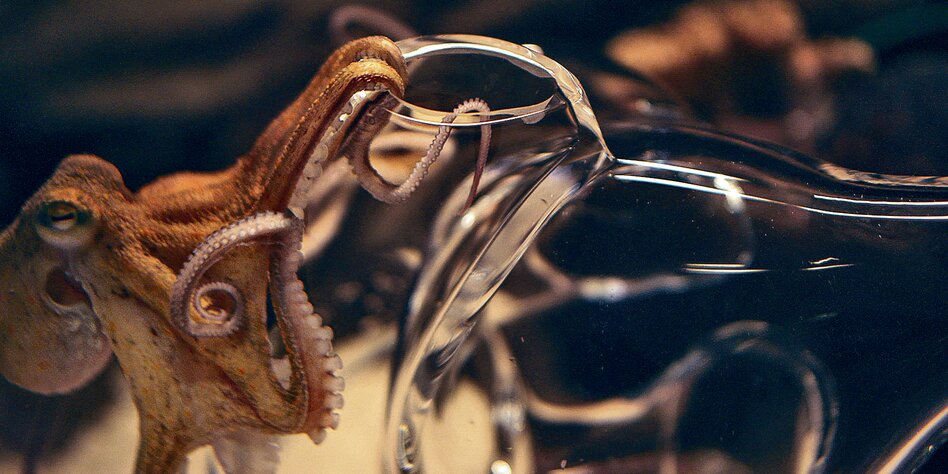Tuomas A. Laitinen: ›Haemocyanin‹
In ›Haemocyanin‹ (2019), an octopus in an aquarium is interacting with a glass sculpture created by the artist – penetrating its crevices, exploring its folds, inhabiting its transparent mass. The focus is on the interplay between the soft, flexible tentacles of the animal and the solid, translucent volumes of the sculpture. We observe the octopus familiarizing itself to the artificial environment through a set of limbic movements, which resemble a dancing language. It is through such a somatic exploration that the octopus grasps awareness and knowledge of the object.
The work was inspired by the research of renowned philosopher and biologist Peter Godfrey-Smith, whose book ›Other Minds: The Octopus and the Evolution of Intelligent Life‹ (2017) takes the move from the encounter with octopuses in the depths of the sea to recount the fascinating chronicle of the evolution of consciousness in living beings. Although octopuses and vertebrates have common ancestors, their intelligence developed completely independently from each other.
Godfrey-Smith’s inquiry on how the octopus, a creature with little social life, developed a fine sensory-mediated intelligence is also taken as the central focus of Laitinen visual narration. Through the encounter with the octopus, akin to a sort of epiphany of an ›extraterrestrial‹ spirit, we learn more about ourselves and the world around us. The title ›Haemocyanin‹ refers to the copper-based protein that gives the octopus’s blood its blue colour.
